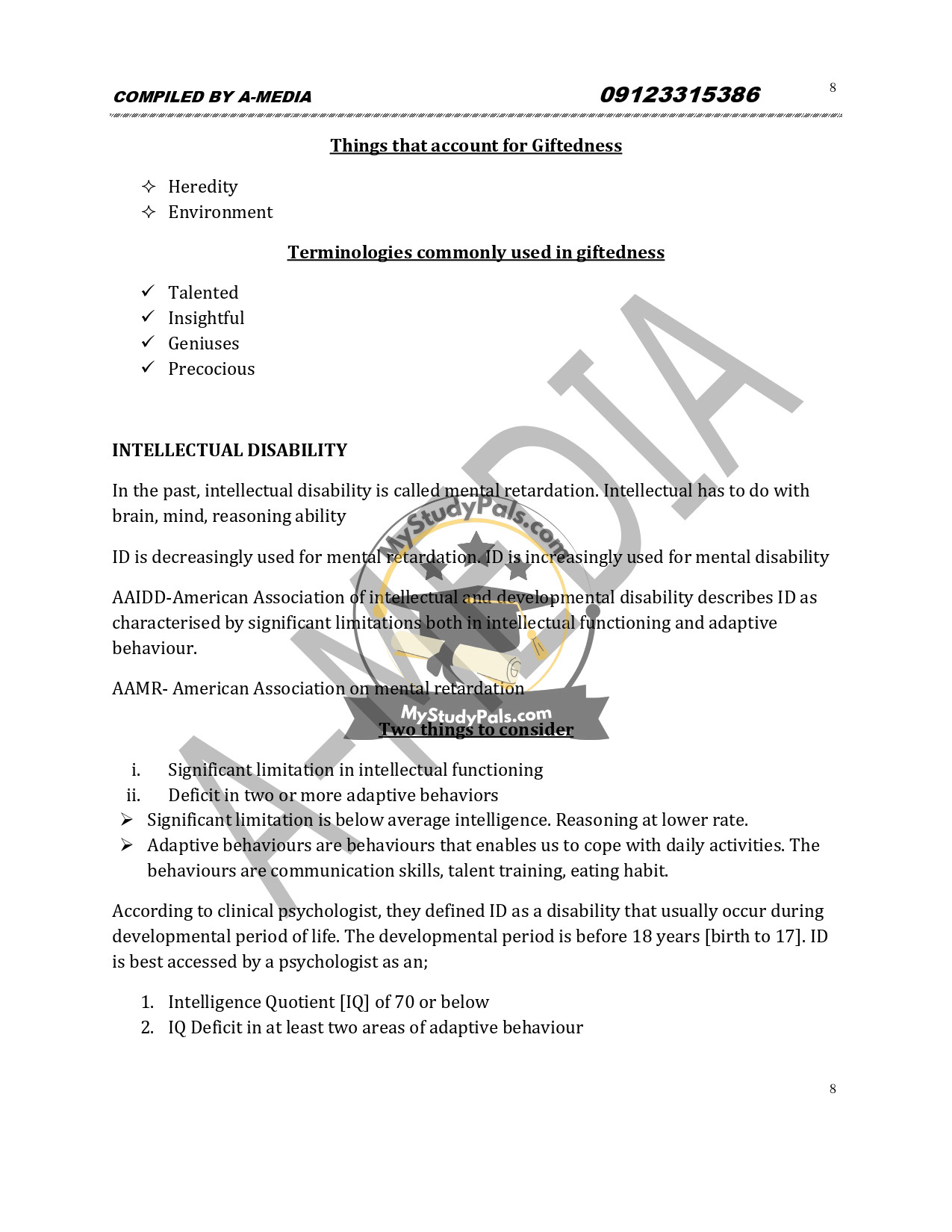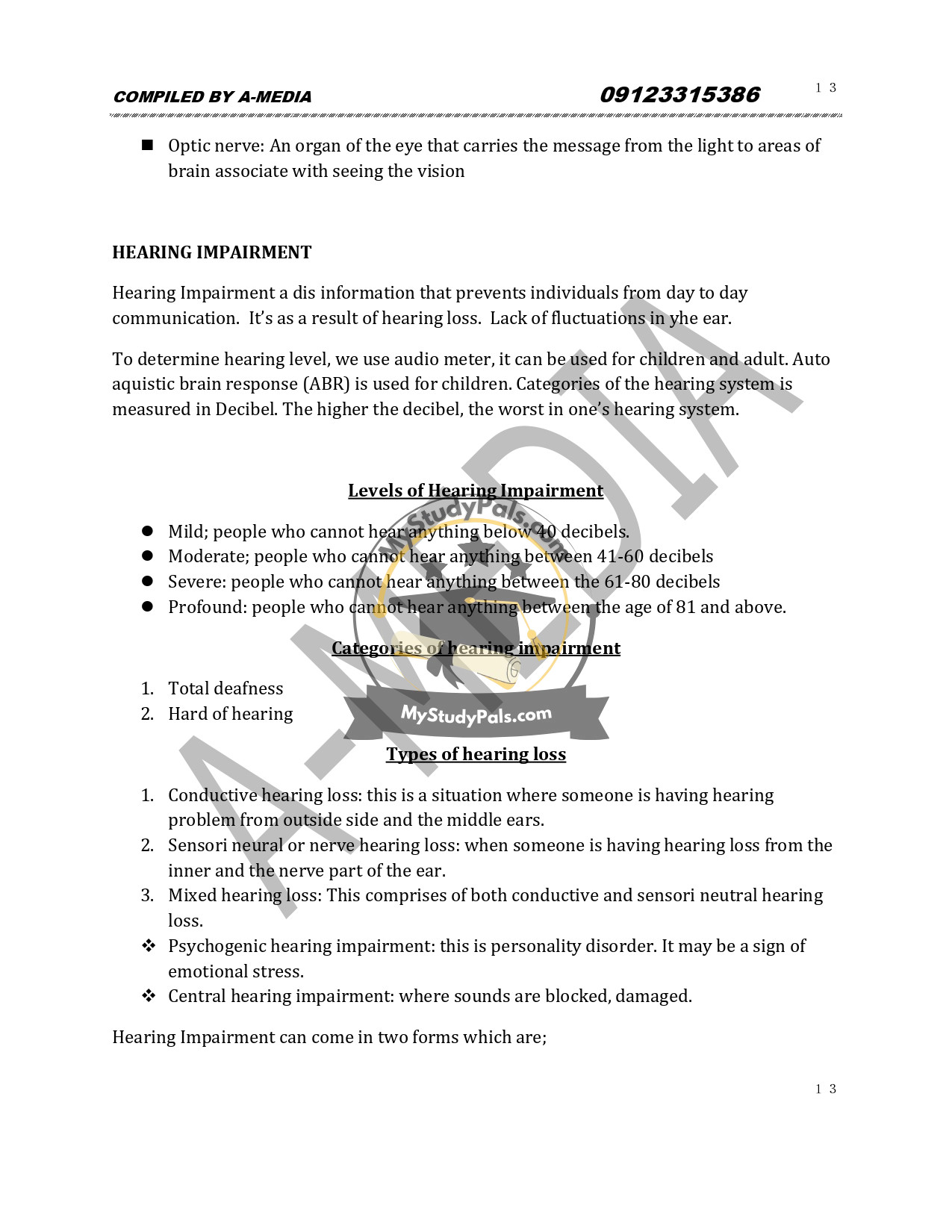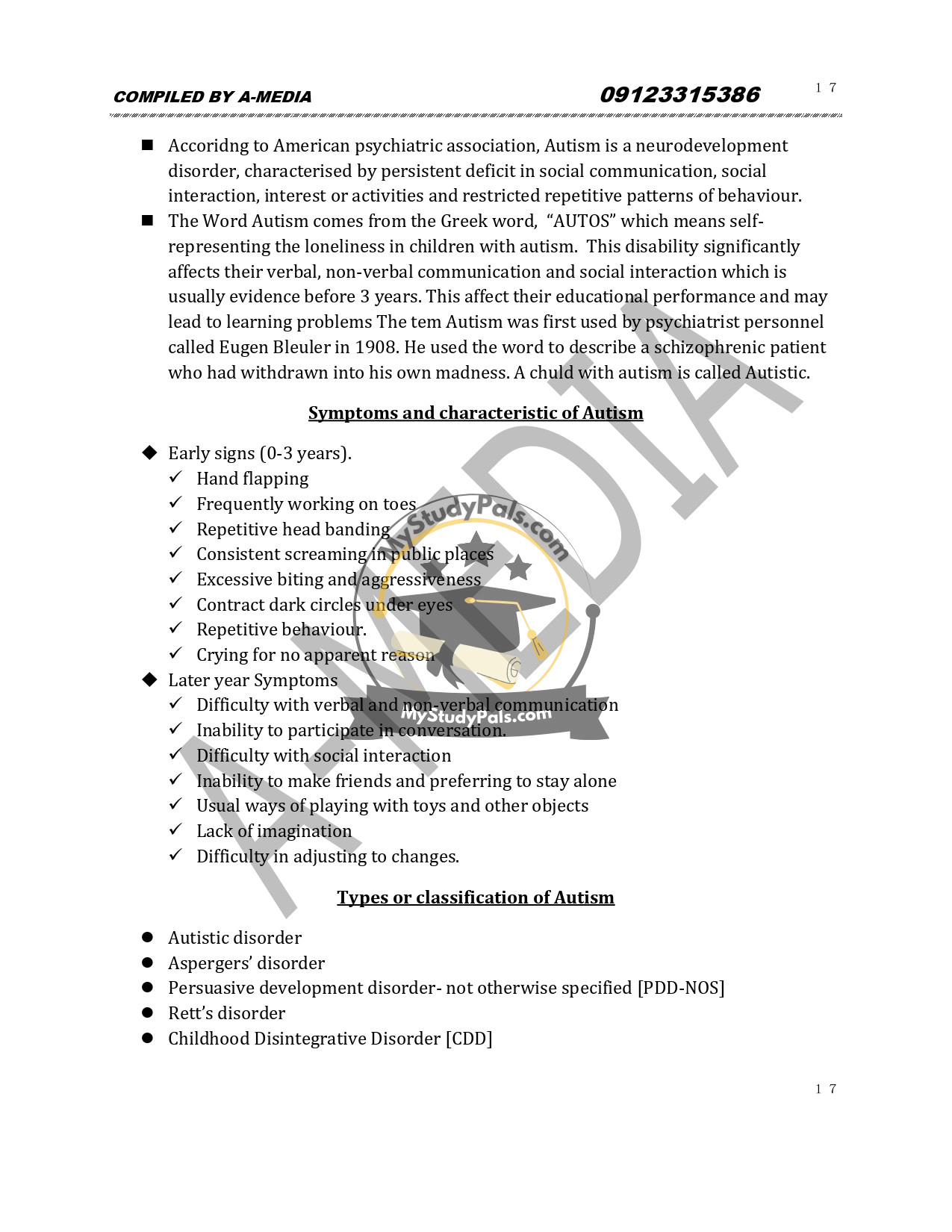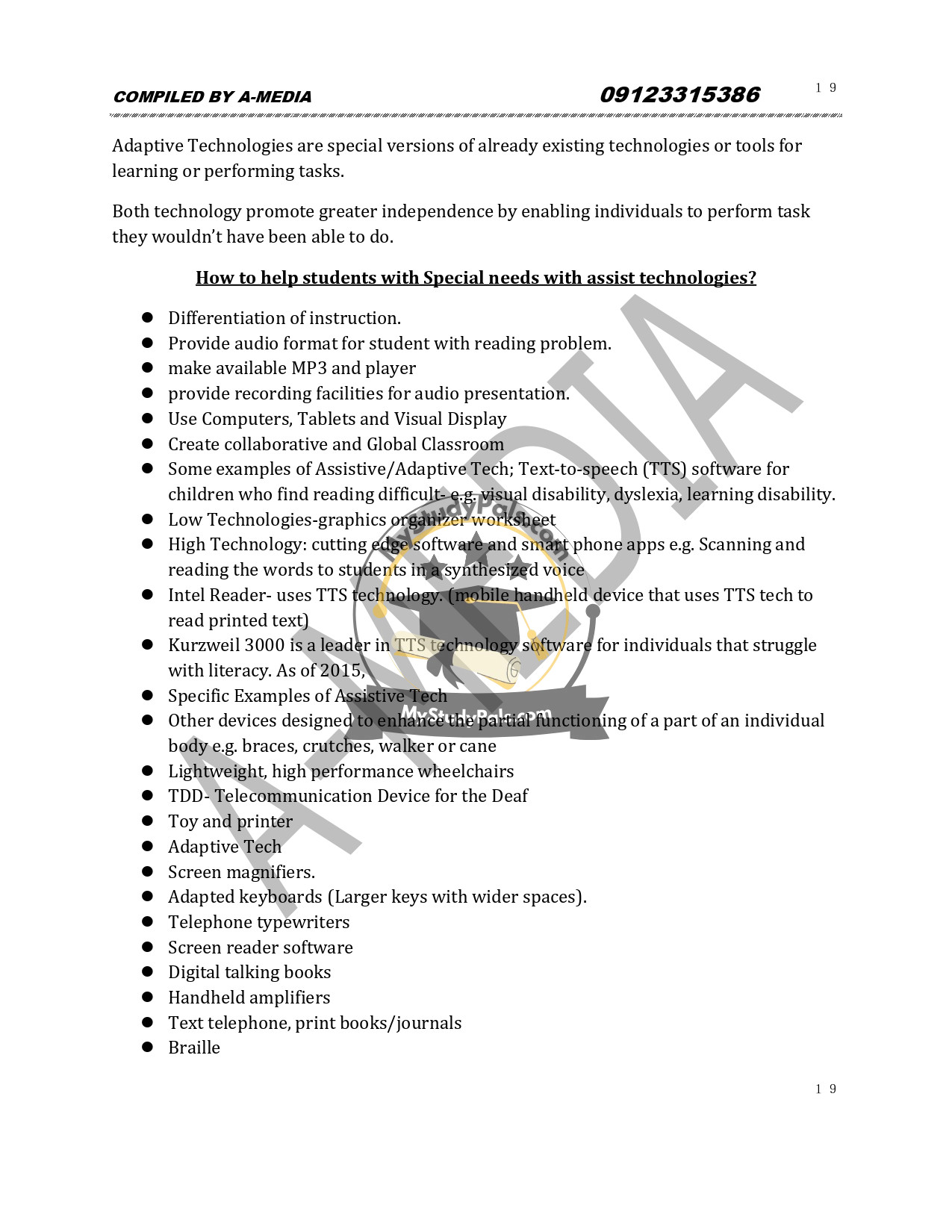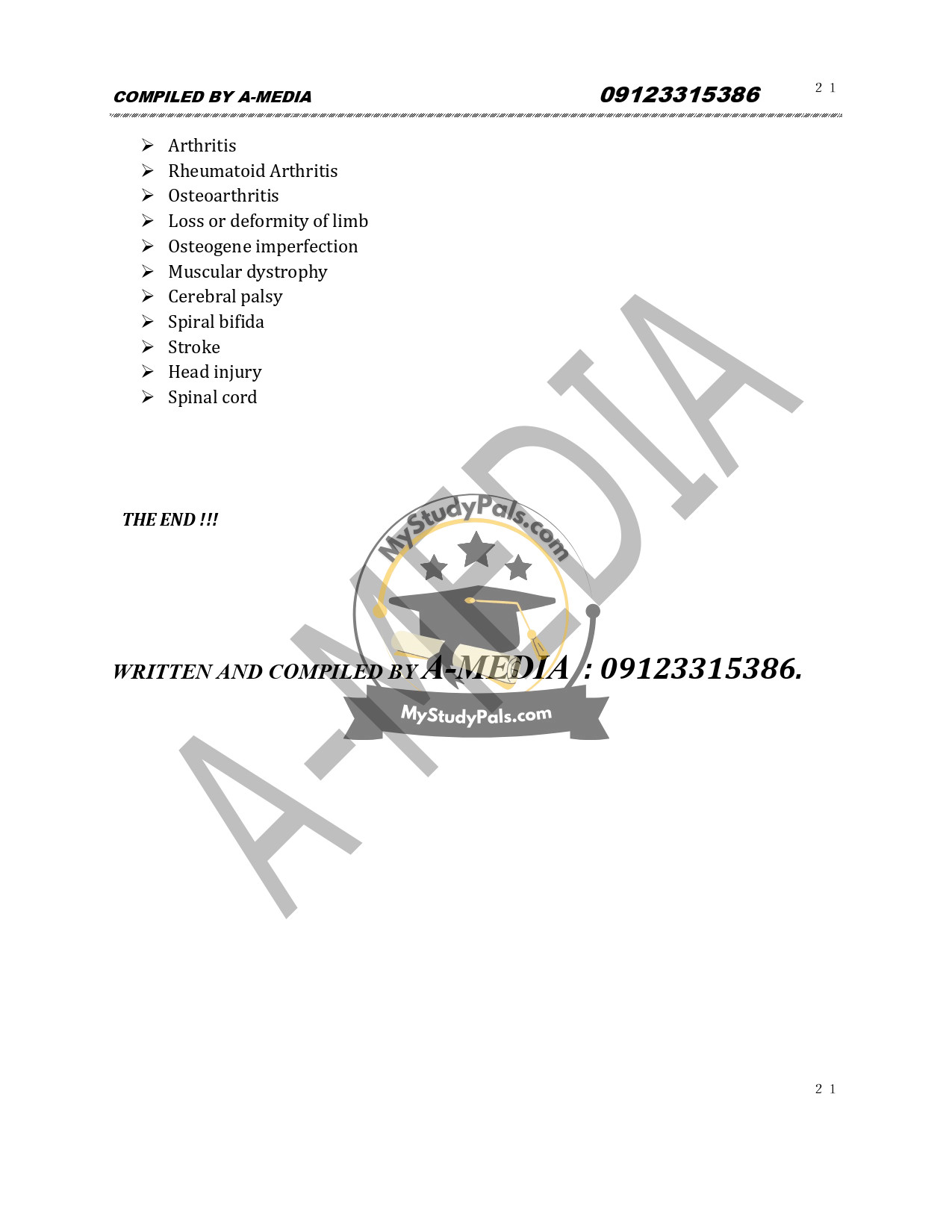ANWSER
—
Question 1: What is Special Education?
Answer: Special Education refers to the education tailored for individuals with disabilities or special needs, such as giftedness, intellectual disabilities, or sensory impairments. It provides extra assistance to help these individuals cope educationally. According to the National Policy on Education (NPE), it includes the education of children and adults with learning difficulties, migrants, fishermen, nomads, and Albinos.
—
Question 2: Define Intellectual Disability (ID) and list its levels.
Answer: Intellectual Disability (ID) is characterized by significant limitations in intellectual functioning (IQ of 70 or below) and adaptive behaviors. The levels of ID are:
1. Mild ID (IQ 50-70): Can acquire academic skills up to senior secondary level.
2. Moderate ID (IQ 35-49): Requires little training and can live successfully with support.
3. Severe ID (IQ 20-34): Needs extensive training and guidance.
4. Profound ID (IQ below 20): Rarely found in regular schools; requires lifelong support.
—
Question 3: What are the types of Visual Impairment?
Answer: The types of Visual Impairment include:
– Total Blindness: Complete loss of vision.
– Congenital Blindness: Present at birth.
– Legal Blindness: Inability to see clearly at 20/200 vision.
– Low Vision: Moderate vision loss.
– Adventitious Blindness: Acquired later in life.
– Tunnel Vision: Restricted peripheral vision.
– Partial Sightedness: Includes myopia (short-sightedness), hypermetropia (long-sightedness), and astigmatism (blurred vision).
—
Question 4: Explain the categories of Hearing Impairment.
Answer: Hearing Impairment is categorized into:
1. The Deaf: Non-functional hearing.
2. The Hard of Hearing: Partial hearing loss, may use hearing aids.
Levels of hearing loss:
– Mild (below 40 decibels).
– Moderate (41-60 decibels).
– Severe (61-80 decibels).
– Profound (81+ decibels).
—
Question 5: What are the characteristics of Giftedness?
Answer: Characteristics of gifted individuals include:
– High intelligence and creativity.
– Independence and curiosity.
– Strong memory retention.
– Keen observation skills.
– Persistent and deep thinkers.
– Advanced problem-solving abilities.
—
Question 6: Describe the types of Learning Disabilities.
Answer: Types of Learning Disabilities are:
– Dyslexia: Reading difficulties.
– Dysgraphia: Writing difficulties.
– Dyscalculia: Math difficulties.
– Dysphasia/Aphasia: Language and communication issues.
—
Question 7: What are the causes of Autism?
Answer: Autism has no single cause, but contributing factors include:
– Biological: Genetic predispositions.
– Environmental:
– Prenatal (advanced parental age, maternal infections).
– Perinatal (low birth weight, hypoxia during birth).
– Postnatal (exposure to toxins, vaccines, or infections).
—
Question 8: How does Assistive Technology help in Special Education?
Answer: Assistive Technology aids individuals with disabilities by:
– Providing tools like text-to-speech software for dyslexia.
– Offering adaptive devices (e.g., Braille, screen magnifiers).
– Enhancing independence through mobility aids (e.g., wheelchairs).
– Facilitating communication (e.g., TDD for the deaf).
—
Question 9: What are the types of Physical Disabilities?
Answer: Physical Disabilities include:
1. Musculoskeletal: Loss/deformity of limbs, muscular dystrophy.
2. Neuromuscular: Cerebral palsy, spinal cord injuries, stroke.
—
Question 10: What is Inclusive Education?
Answer: Inclusive Education is a system designed to accommodate all students, including those with special needs, in general education classrooms by restructuring teaching methods and environments to meet diverse needs.
—









